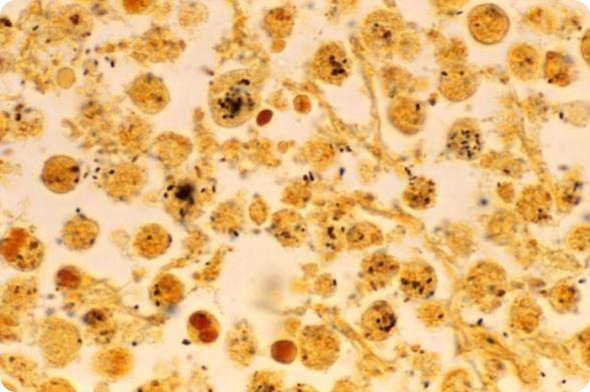 The Health Department announced today that the investigation of the second Lower Washington Heights Legionnaires’ disease cluster is over. There were 32 cases associated with this second cluster, including one death. Thirty people were hospitalized and 25 have been discharged. Two people were treated as outpatients and were never admitted. The majority of the patients had risk factors for Legionnaires’ disease. The likely source of the cluster has been identified. After an extensive patient-focused investigation, sampling of cooling towers, and molecular analysis of Legionella bacteria from human and cooling tower specimens, the Health Department’s Public Health Laboratory has matched clinical specimens from patients associated with the October cluster and the environmental Legionella strain found in the cooling tower at the Sugar Hill Project, located at 898 St. Nicholas Avenue at West 155th Street.
The Health Department announced today that the investigation of the second Lower Washington Heights Legionnaires’ disease cluster is over. There were 32 cases associated with this second cluster, including one death. Thirty people were hospitalized and 25 have been discharged. Two people were treated as outpatients and were never admitted. The majority of the patients had risk factors for Legionnaires’ disease. The likely source of the cluster has been identified. After an extensive patient-focused investigation, sampling of cooling towers, and molecular analysis of Legionella bacteria from human and cooling tower specimens, the Health Department’s Public Health Laboratory has matched clinical specimens from patients associated with the October cluster and the environmental Legionella strain found in the cooling tower at the Sugar Hill Project, located at 898 St. Nicholas Avenue at West 155th Street.
“After a comprehensive investigation, the Health Department has identified the cooling tower at the Sugar Hill Project as the likely source of this cluster,” said Acting Commissioner Dr. Oxiris Barbot. “Sampling conducted at the start of the investigation revealed that Legionella bacteria had returned quickly despite a comprehensive remediation, suggesting that there was potentially something unique in this cooling tower system. The Sugar Hill Project turned its cooling tower off on October 18 to take additional remedial measures, including addressing components that had to be disassembled. The tower remains off, and is under a Commissioner’s Order to remain shut off until Sugar Hill management demonstrates that it has remediated it and can operate the tower safely. When the cooling tower begins operation again, Sugar Hill management will be required to provide sample results on a weekly basis under a heightened monitoring and enforcement program.”
The Health Department has been closely monitoring the Sugar Hill Project since the first Legionnaires’ disease cluster in Lower Washington Heights began on July 11. During the first cluster investigation, the cooling tower was remediated on July 13; for the second cluster, the cooling tower was remediated on October 5. In between and following these two remediations, the Health Department required the Sugar Hill Project to closely monitor its cooling tower and requested additional weekly testing and written updates.
Following the first remediation, the Health Department ordered Sugar Hill Project to sample its tower for legionella. On July 16, the organization tested the water in its cooling tower and results were negative for legionella. The Health Department did confirmatory tests on August 1 and August 13 – no signs of legionella were detected.
Given this tower’s link to a community cluster in July, the Health Department did ongoing and enhanced oversight to ensure that the organization was following its cooling tower maintenance program.
In early October, when a second cluster in Lower Washington Heights was identified, the Health Department immediately sampled all cooling towers in the area and preemptively ordered Sugar Hill to clean and disinfect its cooling tower. Following the disinfection, Sugar Hill re-sampled its cooling tower and did not detect legionella. The Health Department sampled a week later on October 16 and did not detect legionella in the tower’s water.
Despite a full cleaning and disinfection and consistent monitoring, samples taken from the Sugar Hill tower at the outset of the second investigation, and just prior to disinfection, showed high concentrations of legionella. This led the Health Department to focus its investigation on the Sugar Hill tower.
Moving Forward, Next Steps
This is the first time in New York City a cooling tower has been linked to two Legionnaires’ disease clusters. The Health Department’s swift surveillance and knowledge of cooling tower locations was able to pinpoint the cluster. The Department is taking immediate steps to learn from these two clusters and examine the implicated tower in more depth to ultimately best protect New Yorkers from cooling tower-associated Legionnaires’ disease moving forward. These steps include:
- Examining the design of this specific cooling tower and other towers that have been identified as sources of Legionnaires’ disease clusters in the past.
- Convening an expert panel of water system engineers to examine and provide recommendations on cooling tower water systems. This information will be used to advise building owners and cooling tower operators about the potential engineering designs associated with some cooling towers that may foster exponential Legionella growth.
- Introducing enhanced cooling tower regulations to make the requirements more explicit, and enhance the regulatory oversight of these complex systems and management relationships. Some of these changes could include expanding qualification requirements for the “Responsible Person” and “Qualified Person” who are charged with maintaining the cooling tower system; clarifying definitions to specify that all parts of a cooling tower system must meet regulatory requirements; and adding details requiring that any cooling tower disinfection include all “wetted surfaces” in the cooling tower system.
Background on Legionnaires
Legionnaires’ disease is a type of pneumonia that is caused by certain strains of the bacteria Legionella, which grows in warm water. Symptoms resemble other types of pneumonia and can include fever, chills, muscle aches, and cough. In the past, some cases of Legionnaires’ disease have been traced to plumbing systems where conditions are favorable for Legionella growth, such as cooling towers, whirlpool spas, hot tubs, humidifiers, hot water tanks, and evaporative condensers of large air-conditioning systems. The number of cases of Legionnaires’ disease reported to the city each year ranges from 200 to 500.
Individuals only get sick by breathing in water vapor containing Legionella, and the disease is not transmitted from person to person. Individuals at higher risk include those ages 50 and above, cigarette smokers, and people with chronic lung disease or compromised immune systems.
Background on Cooling Tower Regulation
In response to the Legionnaires’ disease outbreaks of 2015, the Mayor and City Council passed Local Law 77 to reduce and contain Legionella growth in cooling towers, becoming the first U.S. municipality to adopt a set of robust requirements to ensure cooling tower maintenance. Changes to the Health Code went into effect in May 2016. After engaging and educating building owners about proper maintenance and operation of cooling towers to avoid the spread of Legionella bacteria the Department began issuing summonses in June 2016.
Under the regulations, all building owners must test their cooling towers for Legionella every 90 days and implement maintenance plans to reduce the likelihood of outbreaks. The regulations detail requirements for operations, routine inspections, reporting increased levels of Legionella bacteria to the Health Department, and annual compliance certification. Failure to comply with requirements is subject to stiff penalties; cumulative violations can total up to $25,000.
Inspections may result in up to 30 violations, which are categorized by seriousness:
- Public Health Hazard: The most serious violation, it is given when there is a lack of basic cooling tower system monitoring and management.
- Critical: This violation is associated with process control, such as treatment, cleaning, disinfection and management of the cooling tower system.
- General: This is given for a lack of recordkeeping, administrative control or non-critical process control.
To enforce the regulations, the Department has hired over 60 staff, trained City personnel, increased surveillance capacity to rapidly detect and respond to potential Legionnaires’ disease clusters, and enhanced the New York City Public Health Laboratory’s ability to detect and characterize Legionella bacteria from cooling tower water samples.
In 2017, the Health Department also launched a new, handheld computer system that allows inspectors to record findings while in the field and issue summonses. After facing technical challenges with the new handheld technology, the Department corrected all the issues and continued monitoring the system. To clarify, these were not staff training-related issues, but rather an IT bug in the system that inserted errors in a number of issued violations. The Office of Administrative Trials and Hearing (OATH) summons process has no bearing on the Health Department’s inspection and remediation timeline.
In 2017, every cooling tower was inspected and the Department worked diligently with building owners to make sure violations that posed the highest risk to public health were addressed. The Department is on track to complete its yearly inspections of all cooling towers by the end of this year and is seeing improved compliance with the rigorous cooling tower requirements.
To promote compliance, the Health Department distributed information about the Management Program and Plan template, how to build a cooling tower system team and general Frequently Asked Questions. The Department launched the Cooling Tower Academy in 2017, providing additional training to more than 800 building owners, managers and cooling tower maintenance companies. In early 2018, the Department released an online self-assessment tool which enables every building owner to conduct its own inspection, check for compliance with cooling tower regulations and fix deficiencies.
For more information go to health.nyc.gov
Become a Harlem Insider!
By submitting this form, you are consenting to receive marketing emails from: . You can revoke your consent to receive emails at any time by using the SafeUnsubscribe® link, found at the bottom of every email. Emails are serviced by Constant Contact








